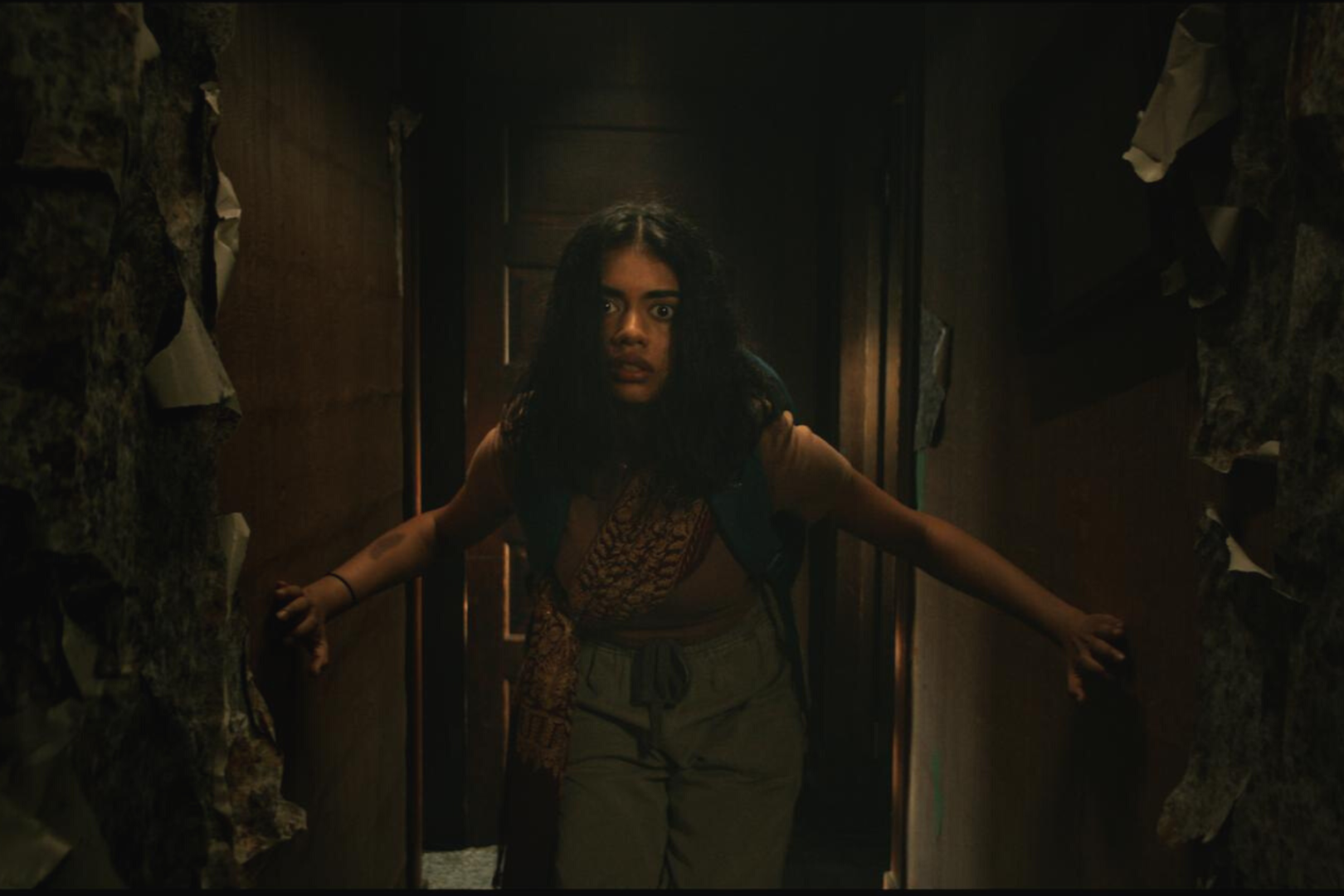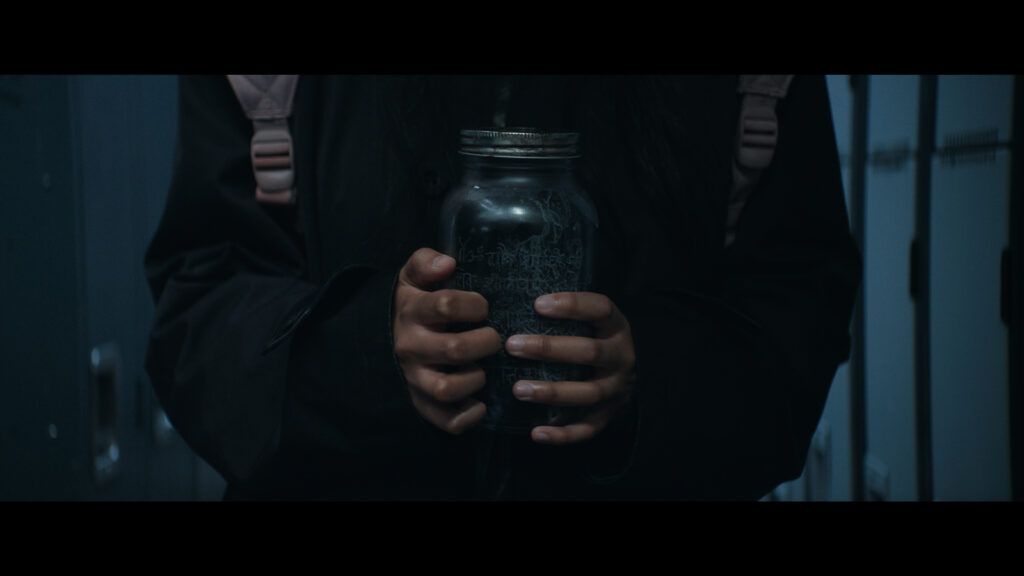
Being a teenager is scary. Hormones, high school, trying to fit in — add to it a flesh-hungry demon from the Indian subcontinent and it becomes downright terrifying. At least, that’s what award-wining director Bishal Dutta’s debut feature “It Lives Inside” will have audiences thinking when it hits theaters on Sept. 22.
From the producers of several blockbusters including “Get Out” and “Us,” “It Lives Inside” stars Megan Suri as Samidha. Samidha is an Indian American teenager growing up in a quintessential small town, where she’s one of only a handful of South Asian faces at her school. She has a sweet, hardworking dad (Vik Sahay) and a caring, but stern mother (Neeru Bajwa). Both of them like their daughter home early to make prasad for prayers and insist no one whistles in the house, fearing it’ll attract evil spirits.
[Read Related: Megan Suri Talks ‘Never Have I Ever’ Season 2 & Decolonizing South Asian Mindsets]
Tamira has become the center of school gossip carrying around an ominous black mason jar, dwelling beneath the gym bleachers. One day, she corners Sam in the locker room, begging her for help from the “monster” trapped in the jar, but Sam is rigid. Her desire to fit overcomes her emotions. Tamira storms out — and then mysteriously goes missing.

Little does Sam know, her childhood friend’s behavior and disappearance were brought on by the Piscacha — a flesh-eating Hindu demon drawn to negative energy — and Sam’s disbelief has just unleashed its terror back on her.
“It Lives Inside” is a breath of fresh air. It has the nostalgic backdrop of a 1980s teen movie (think “Sixteen Candles” or even “Halloween”) but adds the thrill of an exciting new monster for horror fans, and looks for the final girl.
Audiences have spent decades watching and screaming at faith-based horror stories like “The Exorcist,” “The Conjuring,” and “Carrie,” but “It Lives Inside” is the first of its kind for Hollywood, drawing from Hinduism for its frights.
Now, I can’t lie…when I first learned the story would be rooted in Hinduism, I was nervous. I worried that religion and culture may be used as a gimmick, but I was pleasantly surprised.
Dutta’s approach is reminiscent of Bisha K. Ali’s with “Ms. Marvel” on Disney+. Characters speak Hindi and we see South Asian religious practices, foods, and clothing displayed prominently, in a natural and authentic way that other groups can easily learn and understand. The culture merely rounds out the story, it’s not the main character or conflict.
The Piscacha, feeding on the despondence of its prey, may remind some of Vecna from season 4 of Netflix’s “Stranger Things,” but Dutta offers a fresh angle, alluding to the characters’ negative feelings toward their culture being the source of its power.
He offers South Asian American audiences relatable family dialogues and dynamics, but also steers clear of cliches like showing popular kids as mean or Sam’s American crush unlikeable.
“It Lives Inside” isn’t a horror movie you’ll lose sleep over, but that doesn’t mean it’s without palpable moments of fear.

Thanks to Dutta’s creative shots, smart pacing and sensory visuals, in addition to the emotion-packed acting of its cast, the film successfully makes your skin crawl and your jaw drop on several occasions.
The characters are smartly cast with several standouts. Suri is a welcome new face for the horror genre’s final girl and she delivers her role with the right amount of escalating fear and desperation. Meanwhile, Bajwa leans into hers with the passion you’d expect from a protective brown mom, though, at times, some of her Hindi drama tells come through.
“Get Out’s” Betty Gabriel is also noteworthy as Sam’s teacher Joyce and an early confidant. Her support of Sam was a refreshing break from the “this person must be crazy” trope we see so frequently in demonic films.
All that said, “It Lives Inside” does border on being formulaic. It follows a template and scares we have seen numerous times and ones that have done well historically.
But in its familiarity, it also manages to feel fresh. With its South Asian twist, the film proves that even formulaic horror films can find new life through diversity and inclusivity. It raises the idea that they have the potential to scare wider audiences and tell more spooky stories by exploring new cultures and casts.
While “It Lives Inside” is not perfect — the climax may leave you with a few lingering questions — it is a stylish and well-made film and a welcome piece of mainstream South Asian representation.
[Read Related: Kamala Khan As ‘Ms Marvel’ Is The Greatest Thing To Happen To Pakistani-Muslim-Americans]
Recent past has seen South Asian stars delve into many different genres on television and the big screen, but horror has remained largely untouched. Thankfully, “It Lives Inside” has set the table for some brilliant South Asian-based horror films in Hollywood for years to come.
“It Lives Inside” made its world premiere at SXSW and has made its way through the film festival circuit. It will be released theatrically by Neon on September 22.




